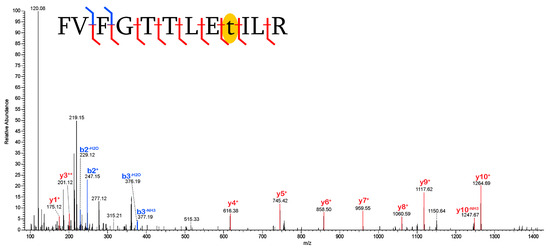Fred Ruhe
Well-known member

Elena R. Schroetew, 2024
Characterization of Diagenetiforms in an Expanded Proteome of the Extinct Moa (Dinornithidae): Identifying Biological, Diagenetic, Experimental Artifact, and Mislabeled Modifications in Degraded Tissues
Minerals. 14 (2): 137.
Bibcode:2024Mine...14..137S. doi:10.3390/min14020137.
Abstract:

 www.mdpi.com
www.mdpi.com
Proteomic analyses of extinct moa (Dinornithidae; ~800–1000 years) bone tissue previously revealed preserved collagens (I, II, and V), as well as several biological post-translational modifications (PTMs) and diagenetic peptide sequence alterations. The diagenetiforms detected in that study provided a baseline of PTM preservation in degraded tissues, identifying sequence alterations that could be accounted for in bioinformatic data searches (e.g., carboxymethyllysine). Subsequently, an improved extraction and sample preparation methodology, coupled with higher resolution mass spectrometry analyses, identified a wealth of previously unidentified non-collagenous proteins (NCPs) from the specimen. Here, in-depth analyses of the PTMs preserved in the expanded data set
provide a detailed look at the types of PTMs (i.e., biological, diagenetic, and potential experimental artifacts) that occur in degraded tissues, the proteins they occur on, and the amino acids they modify. In total, 10 biological PTMs (e.g., ubiquitylation) and 18 diagenetic PTMs, including two advanced glycation end products (e.g., dihydroxy methylglyoxal adduction) and 12 types of oxidative damage'(e.g., pyrrolidone formation from proline), were detected. In addition, peptides displaying diagenetic backbone cleavage (hydrolysis) were frequently observed to possess unidentified, variable mass shifts at their broken terminus, which search software would attempt to erroneously identify as different PTMs. The modifications characterized in the bones of this specimen, both in collagens and in NCPs, provide insight into patterns of preservation and degradation that paleoproteomic studies can utilize when searching and interpreting data sets from fossil tissue
Enjoy,
Fred
Characterization of Diagenetiforms in an Expanded Proteome of the Extinct Moa (Dinornithidae): Identifying Biological, Diagenetic, Experimental Artifact, and Mislabeled Modifications in Degraded Tissues
Minerals. 14 (2): 137.
Bibcode:2024Mine...14..137S. doi:10.3390/min14020137.
Abstract:

Characterization of Diagenetiforms in an Expanded Proteome of the Extinct Moa (Dinornithidae): Identifying Biological, Diagenetic, Experimental Artifact, and Mislabeled Modifications in Degraded Tissues
Proteomic analyses of extinct moa (Dinornithidae; ~800–1000 years) bone tissue previously revealed preserved collagens (I, II, and V), as well as several biological post-translational modifications (PTMs) and diagenetic peptide sequence alterations. The diagenetiforms detected in that study...
Proteomic analyses of extinct moa (Dinornithidae; ~800–1000 years) bone tissue previously revealed preserved collagens (I, II, and V), as well as several biological post-translational modifications (PTMs) and diagenetic peptide sequence alterations. The diagenetiforms detected in that study provided a baseline of PTM preservation in degraded tissues, identifying sequence alterations that could be accounted for in bioinformatic data searches (e.g., carboxymethyllysine). Subsequently, an improved extraction and sample preparation methodology, coupled with higher resolution mass spectrometry analyses, identified a wealth of previously unidentified non-collagenous proteins (NCPs) from the specimen. Here, in-depth analyses of the PTMs preserved in the expanded data set
provide a detailed look at the types of PTMs (i.e., biological, diagenetic, and potential experimental artifacts) that occur in degraded tissues, the proteins they occur on, and the amino acids they modify. In total, 10 biological PTMs (e.g., ubiquitylation) and 18 diagenetic PTMs, including two advanced glycation end products (e.g., dihydroxy methylglyoxal adduction) and 12 types of oxidative damage'(e.g., pyrrolidone formation from proline), were detected. In addition, peptides displaying diagenetic backbone cleavage (hydrolysis) were frequently observed to possess unidentified, variable mass shifts at their broken terminus, which search software would attempt to erroneously identify as different PTMs. The modifications characterized in the bones of this specimen, both in collagens and in NCPs, provide insight into patterns of preservation and degradation that paleoproteomic studies can utilize when searching and interpreting data sets from fossil tissue
Enjoy,
Fred





